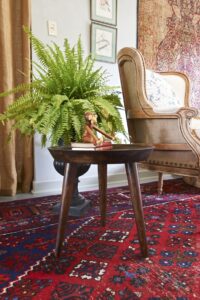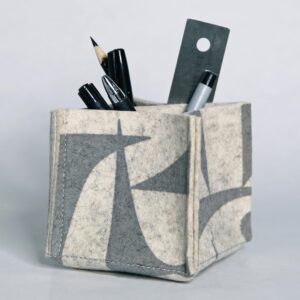As working from home becomes the new normal, many of us are facing the fact that our homes don’t provide a great work environment. Too small, too open, and—with multiple people in the house conducting business all day long—too noisy.

That’s because sound is spread through elements that make up residential structures—walls, floors, and ceilings—as well as the air between them.
Unwanted sound can, to an extent, be absorbed by decor, including upholstered furniture, curtains, carpeting or area rugs, paintings, and wall art. Adding any of those to a work space isn’t hard, and doesn’t have to be expensive; something I learned during the more than 25 years I’ve worked from a home office.
The inexpensive drop cloths I used to make office curtains are a good example. They look great, are extremely durable, wash well, and go with everything. Having them lined in an affordable medium-weight cotton turned out to be a good idea. Not only does it provide better coverage and make them hang better, they now also make an excellent backdrop for video calls, which will also benefit from less background noise.
TIP: I also used generously-cut burlap (left), lined with blue linen, for curtains between rooms, which also knocks down sounds.
Other materials that suck up sound include felt. My favourite felt-work comes from Lorraine Tuson, who makes tableware, pillows, and home accessories from it. On top of being a handsome material for stifling sound, wool felt fibres have a thin waxy coating that inhibits mildew, mold and bacteria.

I covered the cheap linoleum floor in my office with Flor’s graphic carpet tiles, which add comfort, sound absorption and a layer of pretty pattern. Loading up on pillows, throws, and wall hangings will also soften noise.
Those changes, as much as they’ll help, will also mostly be cosmetic. If you’re thinking about renovating any part of your home to make it more work-friendly, now is the time to think about sound. Ask your architect, designer, and contractor about strategies to mitigate and muffle noise.
Think about adding a soundproofing solution like SONOpan, which works by absorbing a wide range of frequencies and reducing sound- and vibration- transmission.
Living spaces like home theatres, basement apartments, playrooms, and home offices create noise. When renovating or building these areas new, plan ahead – soundproofing is best addressed during the construction phase with noise-stopping solutions like SONOpan.
Panels are lightweight and simple to install—either by a contractor or as a DIY project. They can be retrofit, that is, sandwiched between an existing and new layer of drywall, as part of a renovation.

Made in Canada entirely from recycled wood, the four- by eight-feet, ¾-inch thick panels are 100 per cent recyclable, and contain no added formaldehydes or VOCs (volatile organic compounds). That means they contribute to safer indoor air quality—another asset in a home office, where good ventilation boosts both health and productivity.
At less than $1 per square foot, it’s also affordable, especially as you won’t be doing every room in the house—sound solutions should be installed strategically. In a townhouse, for instance, doing just the dividing wall could be a really effective way to reduce sound. To make it even more effective, use that wall for bookshelves to further buffer unwanted noise.
To learn more, check out the segment I did for CHCH TV.
This is a collaborative post with SONOpan. They did not review this material prior to publication. And I really do believe silence is golden – especially in a home office:)





